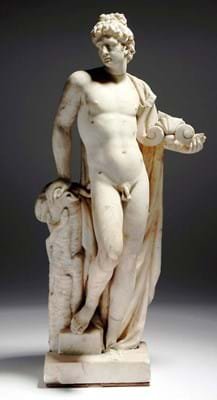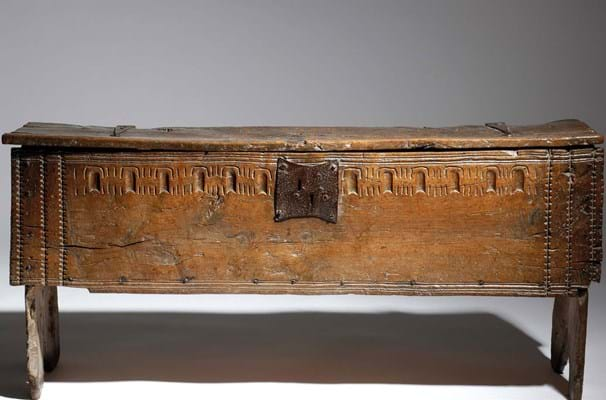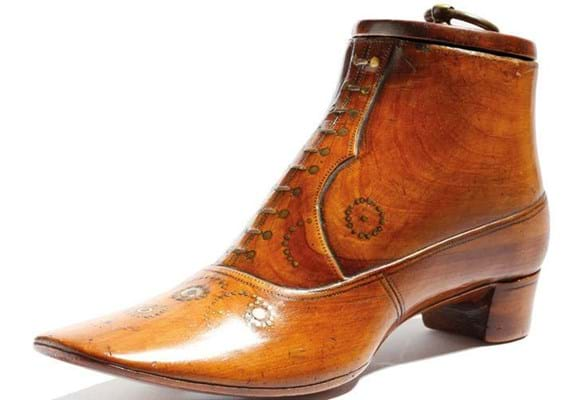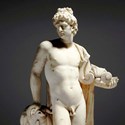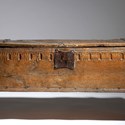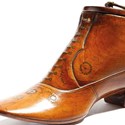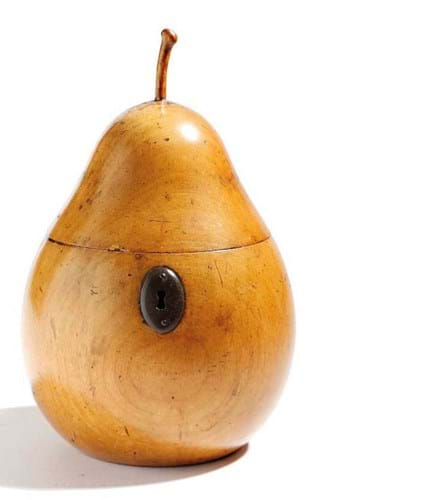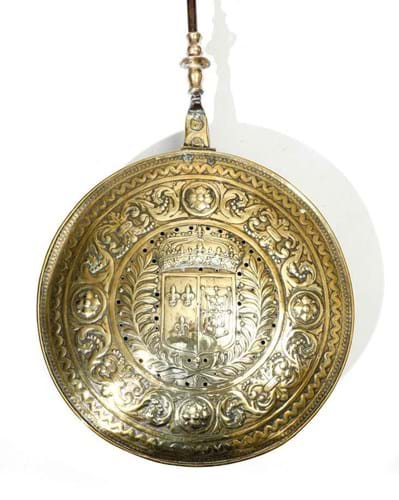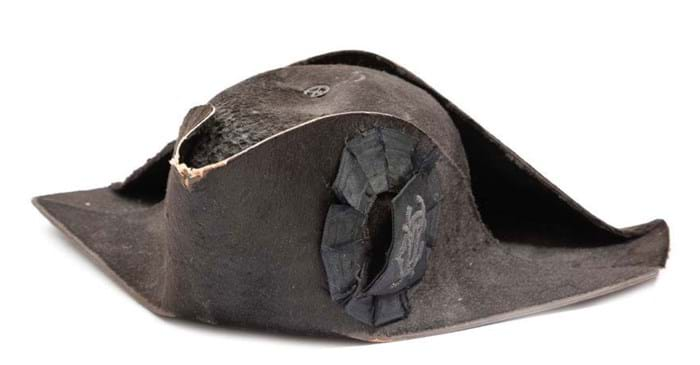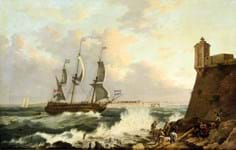His partner of 60 years, Jane Sumner, was realistic about its dispersal across three sales at Woolley & Wallis (25% buyer’s premium) in Salisbury. “You can’t expect to get back what you paid,” she said. “Furniture and metalwork from the 17th and 18th centuries have fallen in price disastrously.”
Collection range
But whatever moment in the collecting cycle it is sold, a good collection remains a good collection.
As one might expect from a dealer who was a BADA member for 46 years, there was plenty of quality for sale on July 3. All bar four of the 133 lots got away, contributing a hammer £131,000 to the day’s total.
One of Braund’s favourite pieces was a pair of George III West Indian satinwood card tables with D-end foldover tops inlaid and strung with kingwood and amaranth banding.
Painted with polychrome bands of scrolling flowers, the pair was catalogued as in the manner of the celebrated makers of painted furniture Seddon, Son & Shackleton and sold to a private buyer on the lower £6000 estimate.
Fruitwood caddies were another of Braund’s enthusiasms, shared on sale day by a number of bidders.
Top-seller was a Regency caddy formed as a 6¾in (17cm) tall pear. Offered with a silver caddy spoon, it sold to a collector at £3200, five times the estimate.
Another piece of treen to quintuple hopes was an unusually large 19th century fruitwood table snuff box shaped as a shoe. With brass laces and tack decoration and inlaid with ivory and mother of pearl rondels, it measured 10in (26cm) long. Pitched at £500-800, it sold to a collector at £3200.
The lacklustre market for early oak was exemplified by the performance of a pair of Charles I oak joint stools attributed to Salisbury that went to the trade below hopes at £1700.
A good Elizabethan oak boarded coffer, 4ft 2in (1.27m) long, with crimped ends and a thumbnail frieze, took a top-estimate £3000 from a private buyer.
A pair of George I walnut wing armchairs doubled the mid estimate at £7500 while a George III waisted elm box stool was a private buy at £3200, more than 10 times the lower estimate.
Elm appreciation
Braund’s appreciation of elm was also evidenced by a George III burrwood tripod table. With an 18in (47cm) diameter dished top on a reeded and vase-turned stem, it tripled top hopes in selling to a dealer at £3600.
A wealth of 17th century brass and pewter wares sold mainly in three-figures but a Dutch warming pan from the same era did rather better.
With a steel and turned brass handle and a pierced hinged lid repoussé decorated with a coat of arms, three fleur-de-lis and a spider’s web, it made £1800, six times the lower guide.
Overseas bidders accounted for two of the high-priced surprises during the ‘mixed owners’ section of the sale.
Standing 20in (51cm) tall, a late 18th or 19th Italian marble ‘Grand Tour ’figure of Apollo, leaning on a serpent-entwined tree stump as he holds the remains of his lyre, was estimated at £800-1200. It sold to an Italian bidder at £15,000.
Key to the appeal of an early 19th century tricorn hat was the maker’s mark S Mason Jr. 166 Was…ton St. Boston.
The milliners have long gone from Washington Street, the longest thoroughfare in the city, but the 14in (36cm) wide hat was a tribute to the lasting qualities of their stock. Estimated at £100-150, it sold to an American bidder at £2200.


